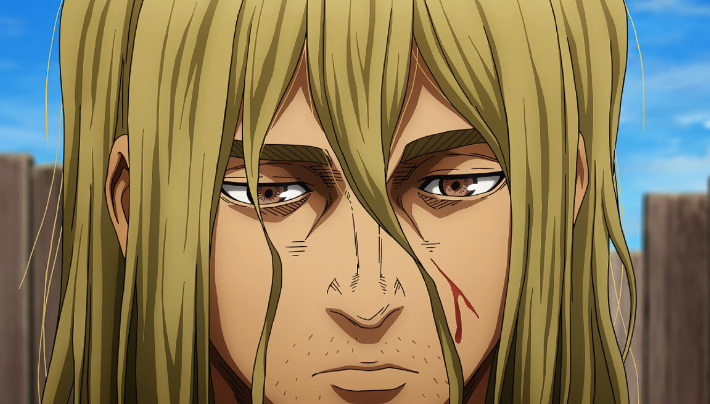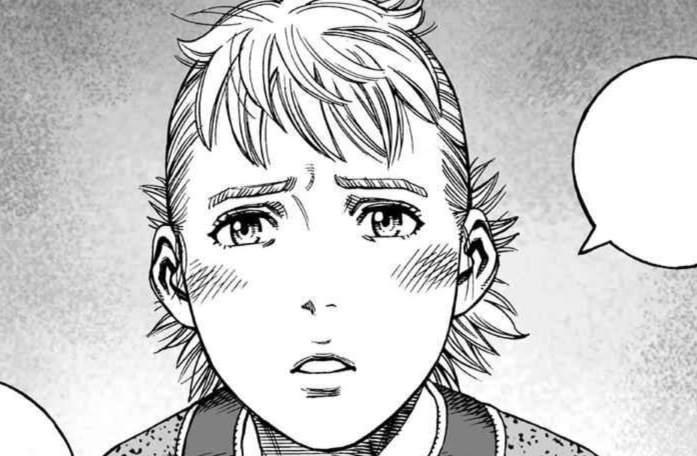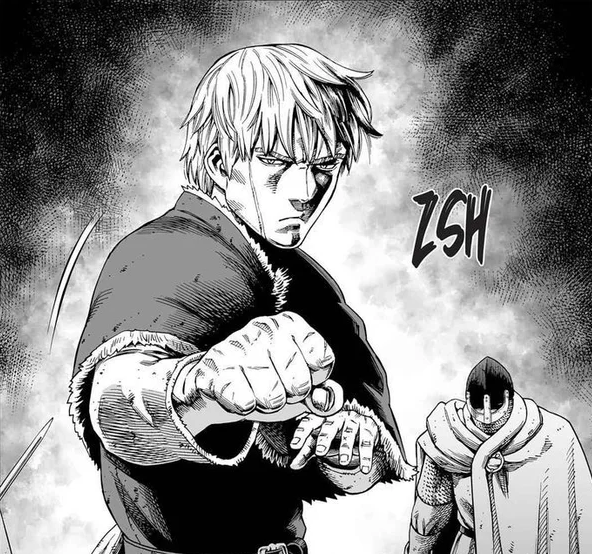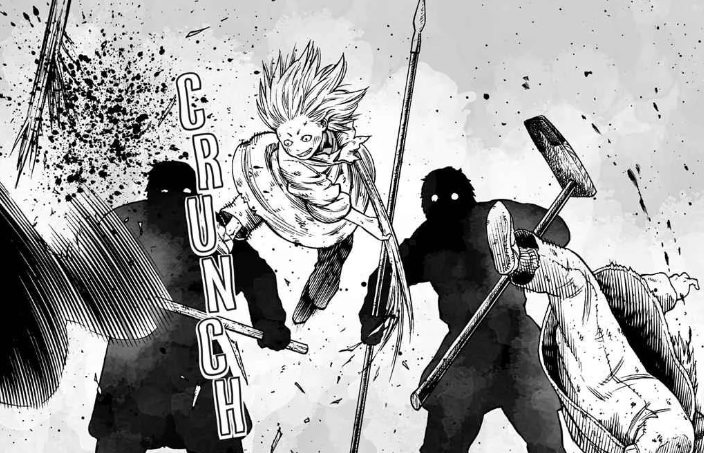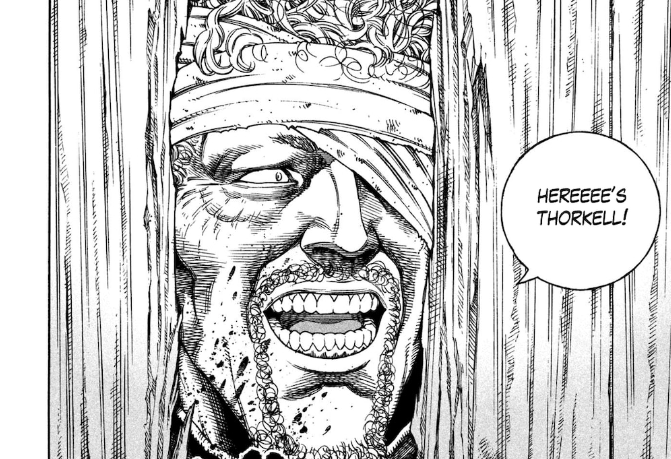The Baltic Sea Arc is pretty good, actually
Vinland Saga’s season two has entered the crucial tragedy of Farmland. As with the manga, I’ve enjoyed the story very much, and think the adaptation is another example of MAPPA’s brilliance when the studio takes charge of an anime they clearly have a love and passion for, and not besotted by time constraints, inhumane deadlines, and unrealistic expectations from production committees. It’s been a treat, but for those who have started this season with expectations of More Of The Same, the slowness and aching depressive episodes of Thorfinn has made for a dreary experience.
I don’t care what anyone says. This is a fantastic arc.
Other criticisms have come from a small number of manga readers who dislike certain character changes. As I read through the complaints, I realised I’d forgotten much of the very early chapters of the arc, so I re-read Farmland and was quickly inspired to revisit the Baltic Sea. I was pleasantly surprised.
I started reading Vinland Saga around the time of Hild’s introduction, and so by the time the battle in the Baltic Seas started in chapter 125, I was a monthly reader. It was a long and arduous task.
The focus of the war is a struggle of succession for the chieftaincy of the Jomsvikings. Unscrupulous Floki wants to save the seat for his grandson Baldr. Floki plans to fend off any rivals for Baldr’s title in the long wait for the 10-year-old to come of age, including Vagn, a formidable foe who wants to give the position to none other than Thorfinn, the true heir. After a number of conspiracies which sees Thorfinn effectively kidnapped by Vagn’s men and forced to join the fight, and a reasonably humorous Thorkell who enters the fray creating his own side of opposition, the Baltic Sea is dyed red with the Jomsviking schism.
Poor baby…
Chapter by chapter, the arc is tiresome. Some chapters feel short and too quickly-paced, and other moments feel misplaced. Sometimes the humour doesn’t always work, and characters like Thorkell become flanderdized and one dimensional. The episodic nature of the chapters overall made the arc feel clunky and disjointed upon first read, and during its serialisation, I thoroughly disliked Hild’s role during most of it. However, after reading it over three days, I had to retract some of my complaints. It’s not that bad at all.
The setup of the different factions originally felt confusing, but now, I appreciate the tension. Floki sends a group of assassins to kill Thorfinn in order to quickly eliminate his biggest threat to the chieftaincy, but after Thorfinn easily disarms them, two are revealed to be double agents working for Vagn. With great reverence, they implore Thorfinn’s cooperation, and without much choice, and wanting to quickly reunite with his friends, he concedes (with Hild firmly in tow).
Thorfinn makes light work of Floki’s soilders. A cool moment.
Thorfinn meets with Vagn and firmly rejects the offer to join the war, but not before discovering Floki’s crucial role in Thors’ murder. Later, Garm arrives, looking for Thorfinn, and quickly disposes of Vagn once he realises Thorfinn has already fled. Once Thorkell, previously on Floki’s team, realises that Vagn has been killed without getting a chance to duel him, he faces Garm just for the fun of it and decides to declare war against Floki. Because he’s Thorkell and that’s what he does. Thorkell’s unpredictability is a forewarning of what’s to come: no one wants to fight him, he has no loyalties, but anyone on the receiving end of his ire is almost guaranteed to die. He’s a dangerous addition.
Garm too is established as a formiddable opponent. After drawing with Thorkell and defeating Vagn so quickly, it’s obviously worrying that his eyes are set on Thorfinn. Like Thorkell, Garm doesn’t care about the reasons for the war, he just wants to fight, and that senseless bloodlust paired with his skill are equally dangerous. As a reader, you’re not worried about Thorfinn dying, but more how these characters will affect his personal vow for nonviolence. And with all this going on, Hild is slinking in and out of shadows with a crossbow trained on Thorfinn’s head. It’s an impossible situation.
We’re all very grateful he found a friend in Thorfinn
Baltic Sea provides the balance to Thorfinn’s vow. In the midst of war, with vulnerable people to protect and a host of others actively trying to kill you, it’s impossible to be completely non-violent. Thorfinn creates ways to end his conflicts by quickly incapacitating his opponents. With his found family always on his mind, he pushes forward to carve the best way to peace. My favourite fight in the arc is Thorfinn and Garm’s, how easily Thorfinn defeats Garm through wits and strategy—tactics he learned from Askeladd. In that moment, Thorfinn becomes Garm’s mentor, and Garm, a lonely, erratic fighter driven by bloodlust, is humbled.
I also notice how the pacing improves upon an un-interrupted readthrough. What I previously dismissed as clunky and episodic became fast-paced and thrilling. The various scene switches between Gudrid’s team with Baldr, Sig and crew, Thorfinn and lonewolf Hild, Garm, and the two battling sides (including all the random skirmishes among them) really emphasizes the random and unpredictable nature of the war. Unlike other war stories I’ve read, this felt more coherent and tightly plotted, and I highly anticipated the moment all the sides would converge, which included some long awaited confrontations (Thorkell and Floki, Thorfinn and Floki, Thorfinn and Garm, Thorfinn and Sig, Sig and Gudrid, and so on). When everyone does come together, the payoff is satisfying.
Einar and Leif just casually getting caught up in a war. Normal stuff.
Whilst I enjoyed the re-read, there are still some things I dislike about the arc.
Garm is a great character, up to a point. His cool design, psychopathic nature, and unchecked bloodlust is great on paper, but the execution is a little childish. He is almost too invincible, with an anachronistic attitude. I would have expected some mention of Valhalla, or of being a proud warrior, or making reference to a strong and necessary culture of war. Garm doesn't act like a Viking, and instead feels more suited to a contemporary horror. In fact, he shares traits with Juuzo and Shuu from Tokyo Ghoul. This is all encapsulated with the bizarre chapter where he shouts out the name of his attack. Is this One Piece?
On the subject of characters, Thorkell’s antics get tiresome. We know he’s a battle maniac who loves war and the thrill of the fight, but seeing him pouting, almost wasting away because life is too peaceful, turns what was a frightening character into a mascot. We’re totally thrown out of the historical narrative once again with Thorkell’s infamous The Shining reference, instantly rendering what should have been a tense moment into a joke.
Can’t say I’m a fan…
In the same chapter, a secret weapon that hadn’t even been referenced before suddenly appears: a beast man called Ymir, summoned to defeat Thorkell. Considering Floki had been wandering around scared shitless in the preceding chapters, to see his expression abruptly switch to gloating confidence as he brings forth Ymir from a random wooden compartment in his cabin is strange to say the least. Ymir is also a non-human entity. As far as I remember, Vinland Saga was a historical manga, not a dark fantasy.
Although the main battle moves at a great pace, certain key moments still progress a little too quickly. Right at the end of the arc, Thorkell, war personified, easily folds and goes along with Thorfinn’s plan to disband the Jomsvikings. Even stranger, when challenging him to a real duel, the first time he’ll get to fight an adult Thorfinn, he relents without complaint when Gudrid steps in to prevent it. I feel like the Thorkell of old would have batted Gudrid away and forced Thorfinn to fight. A massive moment between Thorfinn and Gudrid takes place here, and I wonder if Yukimura was more concerned with getting Gudrid’s love confession on paper than staying true to the other characters. The chapter itself is likely a whole setup just for that one page.
Oh they are so cute.
Lastly, Hild. Her moments during the war don’t only create tension, they also diffuse it. During times when the reader desperately wants to know how Thorfinn will overcome his emotional and/or physical obstacles, Hild’s panels are unwanted. Seeing her glum expression, crossbow raised, and the same repeated phrase “I’ll kill you if you do….” or “if you had gone any further, I would have killed you”, halts the dilemna. We now know for certain that Thorfinn won’t be forced or tempted to kill or get overly violent because Hild will shoot him. Any sense of mystery or anticipation has vanished. This is all I’ll say for now, because I would like to talk more thoroughly about Hild, and characters like her, at another time.
I’m glad I got a chance to re-read the arc. I could only remember how exhausted I was going chapter by chapter over the months it was serialised, sometimes to fewer pages than I anticipated, sometimes after an extended break. It’s inspired me to review all my favourite stories in the same way. I wonder how, say, Dressrosa and Wano will fare after a total readthrough? Because lord knows they were excruciating reads week by week. Thankfully, I started Berserk just as the infamous “Boat Arc” had ended, so whilst certain parts of the battle against the pirates dragged a little, I was more able to focus on all the other beautiful moments during that arc, such as the introduction of Isma and the great Merrow rescue.
For the most part, I love serialisation, but Baltic Sea shows that sometimes it’s worth waiting for the tankobon.
